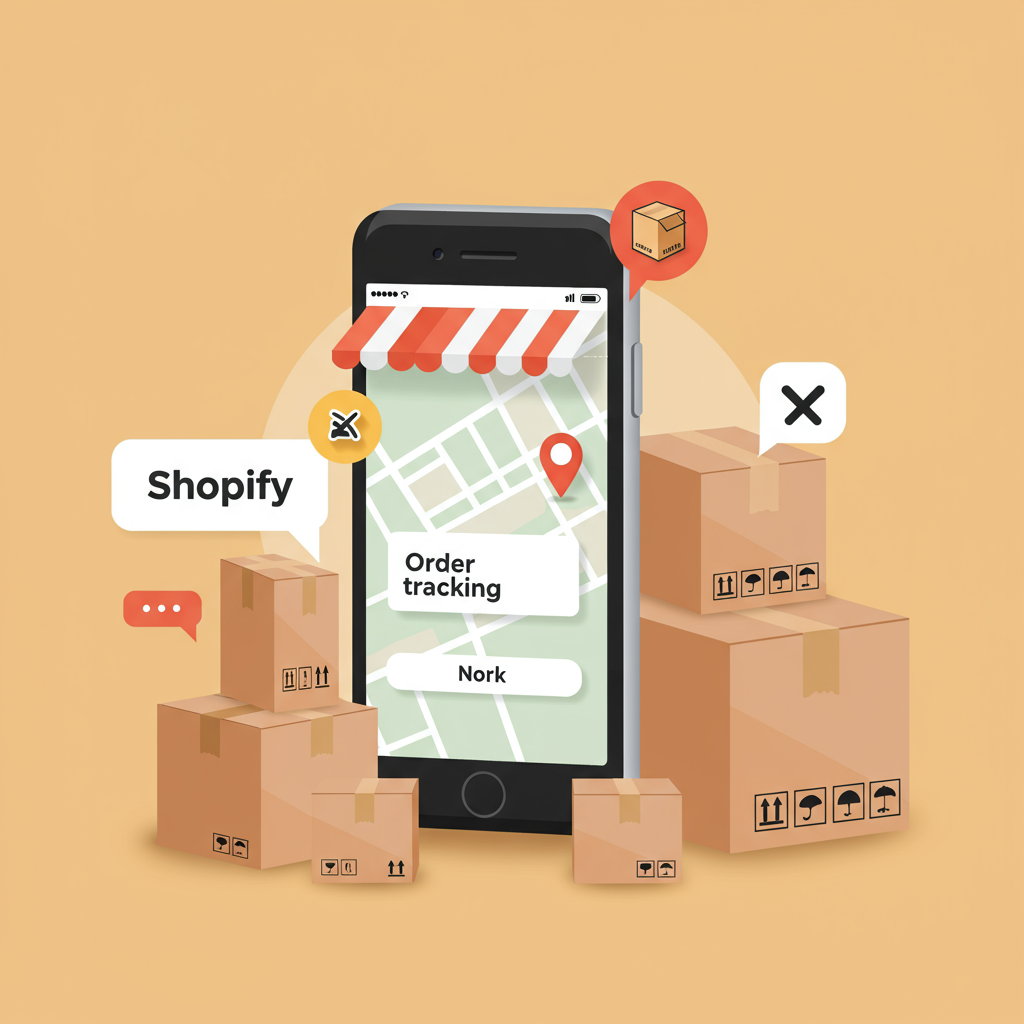Elevate Customer Experience and Streamline Operations with Seamless Tracking Integrations.
As a Shopify merchant, I know firsthand the excitement of a new order. But that excitement quickly shifts to the crucial phase of fulfillment and, perhaps most importantly, ensuring your customer knows exactly where their eagerly awaited package is.
In today’s e-commerce landscape, customer expectations are higher than ever. They don’t just want their products; they want transparency and control over their delivery experience.
This is where robust order tracking integration becomes not just a nice-to-have, but an absolute necessity for any serious Shopify store. It’s about building trust and reducing anxiety.
Think about it from your customer’s perspective. They’ve just spent their hard-earned money. The moment they click “purchase,” a new set of questions arises: “When will it ship?” “Has it left the warehouse?” “Is it on its way?”
Providing clear, real-time answers to these questions through effective tracking can significantly enhance their post-purchase experience, turning a one-time buyer into a loyal advocate.
For us merchants, the benefits are equally compelling. A common pain point is the dreaded “Where Is My Order?” (WISMO) inquiry. These questions can flood your customer support channels, consuming valuable time and resources.
By proactively offering comprehensive tracking, you empower your customers to find answers themselves, drastically reducing the volume of these repetitive inquiries. This frees up your team to focus on more complex issues.
Shopify, by default, offers basic tracking capabilities. When you fulfill an order and add a tracking number, your customer receives an email with a link to the carrier’s website.
While functional, this native approach often lacks the sophistication and branding opportunities that modern e-commerce demands. The customer is redirected away from your store, losing that crucial brand touchpoint.
This is precisely why integrating a dedicated third-party order tracking solution is a game-changer. These specialized apps and services are designed to elevate your tracking experience far beyond the basics.
What exactly do these integrations offer? Let’s dive into the key features you should look for and why they matter for your Shopify store.
Firstly, **real-time updates** are paramount. Customers expect to see their package’s journey unfold step-by-step, from processing to out for delivery. A good integration pulls data directly from multiple carriers and updates frequently.
Secondly, **branded tracking pages** are a must. Instead of sending customers to a generic carrier website, these solutions allow you to host a tracking page directly on your Shopify store, complete with your logo, colors, and even product recommendations.
This keeps the customer engaged with your brand even after purchase, reinforcing your identity and potentially driving repeat sales. It’s a powerful marketing tool disguised as a utility.
Thirdly, **automated notifications** are incredibly valuable. Beyond the initial shipping confirmation, these systems can send proactive updates via email or SMS for events like “in transit,” “out for delivery,” “delivered,” or even “delivery exception.”
These timely alerts keep customers informed and reduce anxiety, especially during critical delivery stages. They also help manage expectations if there are unforeseen delays.
Fourthly, **multi-carrier support** is essential, especially if you ship internationally or use various local carriers. A robust tracking solution integrates with hundreds of global carriers, providing a unified tracking experience regardless of the shipping method.
Finally, look for **analytics and insights**. Many advanced tracking apps provide data on delivery performance, common issues, and customer engagement with tracking pages. This data can be invaluable for optimizing your shipping strategy.
So, how do you go about integrating one of these solutions into your Shopify store? The process is generally straightforward, thanks to the Shopify App Store.
Popular choices include apps like AfterShip, Trackr, ParcelPanel, and 17TRACK. Each offers a slightly different set of features and pricing tiers, so it’s worth exploring a few to find the best fit for your specific needs.
My advice is to start by identifying your core requirements. Do you need extensive branding? SMS notifications? Support for obscure carriers? Prioritize what matters most to your business and customers.
Once you’ve chosen an app, the integration typically involves a few simple steps. First, you’ll install the app directly from the Shopify App Store. This usually grants the app necessary permissions to access your order data.
Next, you’ll configure the app’s settings within your Shopify admin. This might include connecting your shipping carriers, customizing your branded tracking page, and setting up notification triggers.
Many apps also offer options to automatically add the tracking link to your Shopify order confirmation emails and your customer’s order status page, ensuring seamless access.
The impact of a well-implemented order tracking system is profound. It transforms the post-purchase experience from a potential source of frustration into an opportunity for delight.
Customers feel more informed, more in control, and ultimately, more satisfied with their purchase. This positive experience directly translates into higher customer loyalty and repeat business.
Furthermore, by significantly reducing WISMO inquiries, your customer support team can dedicate their efforts to more complex issues, improving overall operational efficiency and reducing overhead costs.
It also enhances your brand’s professional image. A seamless, branded tracking experience signals to your customers that you are a reliable and customer-centric business, building trust and credibility.
In conclusion, investing in a comprehensive order tracking integration for your Shopify store is not just about providing a tracking number; it’s about delivering peace of mind, fostering loyalty, and optimizing your business operations.
It’s a strategic move that pays dividends in customer satisfaction and operational efficiency. What are your thoughts on the importance of order tracking for e-commerce businesses?
I encourage you to explore the options available in the Shopify App Store and take the leap towards a more transparent and customer-friendly post-purchase journey. Your customers, and your support team, will thank you for it.






